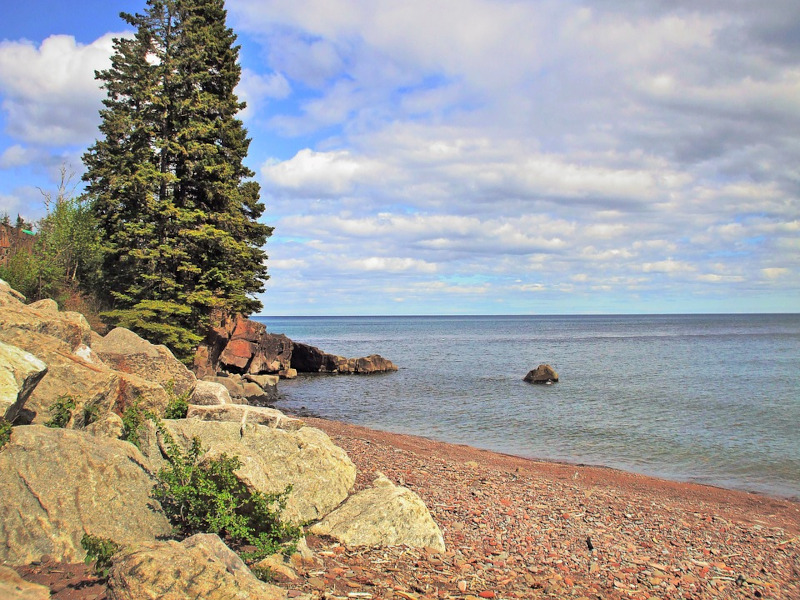
Lake Superior Facts
- This dazzling body of water that so thoroughly boggles the mind with its immensity is now known by the appropriate name of Lake Superior. In the past, though, this majestic creation of natural processes bore another name that has unfortunately been completely forgotten.
- That’s because, for countless centuries, this wonder bore a name derived from the language of the local Indigenous Peoples. The Ojibwe, a tribe of the Anishinaabe nation, referred to the amazing lake by the title gichi-gami. Intriguingly, in their language, this term meant great sea.
- For the meomtn, the name of the first European to encounter this wonder of Nature remains a matter of some debate. This occurs due to the existence of few records of the time period. For the moment, the French explorer Etienne Brule holds credit for the first sighting, in 1620.
- It also forms one of a total of five, interconnected, gargantuan bodies of freshwater currently known to exist. They’re by far the largest in their entire region of the world. Collectively, these products of time and natural processes understandably bear the name the Great Lakes.
- Rankings of bodies of water vary, based on different criteria, though. Magnificent Lake Superior, however, appears very high near the top of any such list. It ranks as the third-largest on earth in terms of volume. It does, however, rank as the largest on earth in terms of surface area.
Related Articles
Lake Superior Physical Description
The magnificent Lake Superior easily merits attention and appreciation for a wide and varied list of factors. Although sheer size isn’t the only reason among them, it certainly stands out. The beautiful lake has a total surface area that roughly equals an astounding 31,700 sq mi (82,000 sq km)!
It’s dimensions vary quite significantly, though, as well. Overall, however, this majestic formation has a somewhat oval shape to it. The maximum length of the feature also measures approximately 350 mi (560 km). Its greatest measured width, meanwhile, equals roughly 160 mi (260 km).
While not quite as deep as a few other lakes situated around the world, it nevertheless boasts some truly impressive statistics there, as well. That’s due to the fact that it possesses an average depth of roughly 483 ft (147 m). Its maximum known depth, though, comes in at 1,333 ft (406 m).
The volume of the breathtaking Lake Superior also merits a full degree of appreciation and respect. That’s because, in total, the body actually holds an average of 2,900 cubic mi (12,100 cubic km) of water. Due to such massive volume, this natural feature holds 10% of all known surface freshwater.
Its wonders don’t end there. This incredible lake further holds a remarkable 400 islands! While most remain quite small, a few have respectable dimensions. The largest of these features bears the impressive sounding name of Isle Royale. It itself measures approximatley 207 sq mi (536 sq km).
This part of the stunning lake additionally holds yet more marvels to behold. That’s due to the incredible fact that the island also boast several small lakes of its own. Amazingly, some of these many small lakes, formed on an island in the lake, also have several small islands themselves!
Lake Superior Location, Formation, and Ecology
The awe-inspiring body of water currently known by the name of Lake Superior formed in a region of the globe already well known for its abundance of natural beauty. More precisely, this stunning example of Nature formed on what now bears the name of the continent of North America.
Its boundaries also exist within the borders of two separate countries located in the region. The majority of it exists within the United States, however. There, the lake sits in parts of the states of Minnesota, Wisconsin, and Michigan. A small part, though, is shared by Ontario, in Canada.
Its name, moreoever, refers to much more than just its comparative size. This fact holds true due to its placement, relative to the other four of the aptly-named Great Lakes. That’s due to the facts that it’s both the northernmost and the westernmost of them. It’s also the highest in elevation.
This marvelous lake also has an in-depth, ancient history, as well. It’s northern shore, in fact, forms part of what’s named the Canadian Shield. This feature formed due to volcanic activity occurring around 2.6 billion years ago. Subsequently, around 1.1 billion years ago, the continent drifted apart.
Subsequent to that, though much later, the current geographical features formed due to powerful glacial activities during the last Ice Age. At one point, about 1.6 million years ago, ice covered the region to depths of as much as 1.25 mi (2 km). This then melted, around 10,000 years ago.
Currently, an astounding total of more than 200 different rivers feed into Lake Superior, maintaining its volume. It further possesses an average surface altitude measuring 600 ft (183 m) above sea level. Its water levels understandably fluctuate, sometimes sharply, due to environmental factors.
Its enormous size even serves to moderate the general climate in the surrounding region. This action also provides for a relatively stable environment for local wildlife. This includes an extensive variety of fish species within the lake. Currently, more than 80 species of fish call the lake home.
Features Sharing Its Region
Check out our other articles on 3 Fabulous North American Felines, Pesquet’s Parrot, Atacama Desert, Alaskan Timber Wolf, Mandrinette, Giant Forest Ant, Tiger Shark, Saltwater Crocodile
